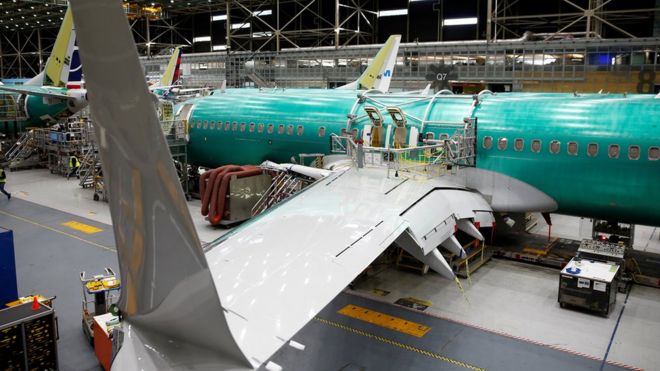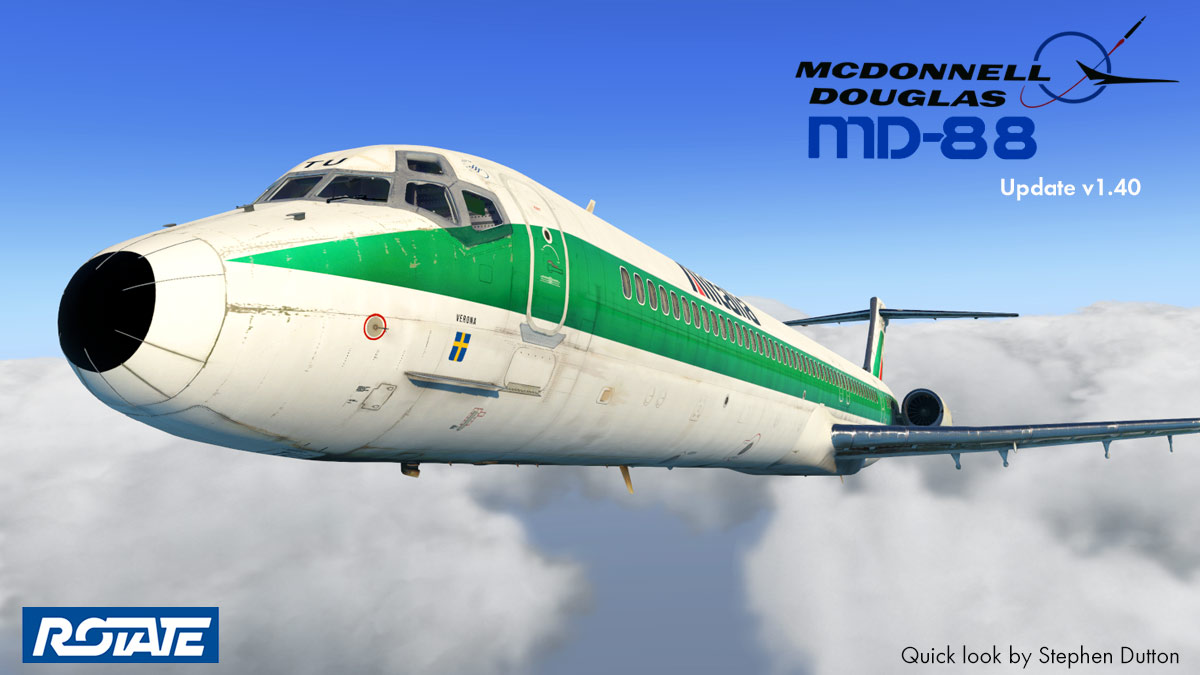Travel
Related: About this forumBoeing suffers new 737 Max issue that could delay return
Source: BBC
26 June 2019

US regulators have uncovered a possible new flaw in Boeing's troubled 737 Max aircraft that is likely to push back test flights.
The Federal Aviation Administration (FAA) said it identified the "potential risk" during simulator tests, but did not reveal specific details.
Boeing's top-selling aircraft was grounded in March after two crashes.
The company is upgrading the aircraft's anti-stall software, which is the focus of crash investigators.
In a tweet, the FAA said: "On the most recent issue, the FAA's process is designed to discover and highlight potential risks. The FAA recently found a potential risk that Boeing must mitigate."
-snip-
Read more: https://www.bbc.com/news/business-48752932
Link to tweet
Midnightwalk
(3,131 posts)Reading the article two possibilities are mentioned and I have a speculation on what the problem might be.
Other sources said the problem was linked to the aircraft's computing power and whether the processor lacked enough capacity to keep up.
There were earlier reports that there were two angle of attack sensors but only one was active. I can’t recall if they were both hooked up.
I thought at the time that maybe they just didn’t get the software done to use both. I wonder if a factor was that the processor was under sized and that using both sensors pushed the processor utilization too high.
Sorry for the wild a** guess
Major Nikon
(36,900 posts)Boeing made software that compared the two AOA sensors optional, so some aircraft have it and some don't.
Jets made at least since the 80's typically have two AOA sensors that operate the stick shaker and stick pusher in the event of an impending stall. So this part of the technology is nothing new and has been around for a very long time when processors were far less powerful. If you look at the MD-80 series (a design which goes back to 1980), you'll see a sensor underneath each cockpit side window that has a red circle around it. That is the AOA sensor tied to the stall protect system.

Midnightwalk
(3,131 posts)If you don’t mind I’ll ask some dumb questions since you seem to know this stuff.
Re-googling the reporting seems to say the optional software was related to displaying the two readings and an indicator that the two disagreed, but that MCAS only used one input.
https://www.nytimes.com/2019/03/21/business/boeing-safety-features-charge.html]
Boeing’s optional safety features, in part, could have helped the pilots detect any erroneous readings. One of the optional upgrades, the angle of attack indicator, displays the readings of the two sensors. The other, called a disagree light, is activated if those sensors are at odds with one another.
https://www.google.com/amp/s/amp.cnn.com/cnn/2019/04/30/politics/boeing-sensor-737-max-faa/index.html]
Does the reporting sound correct? The part about MCAS only using one sensor is one of the things that bothers me.
Later last night I thought that comparing two readings shouldn’t be computationally difficult, but doubling the number of sensor reads could be expensive (or getting the data from a different processor) in terms if processor time.
I don’t know if the displays and MCAS ryns on the same processors. If they do there shouldn’t have to more IO like reads so my guess is shot to hell again.
There were also reports earlier that one of the adjustments to MCAS during the original flight tests was to allow a greater range of corrections. If true that’s probably a better explanation for the slow behavior in the original article than my bs guess.
Thanks for any clarification. I realize my speculation doesn’t really help anyone but getting corrected helps me learn.
Major Nikon
(36,900 posts)I can just tell you that stall protection systems(SPS) have been installed in jets for decades and per this particular article it seems the latest concern is with the SPS.
SPS is more of a mechanical implementation of the processing of sensor data. You literally get physical feedback from the stick shaker on an impending stall and if the aircraft gets close enough to a stall the system will physically push the stick forward to break the stall.
MCAS works in conjunction with the pitch trim system. It uses the AOA sensor data to make adjustments to pitch trim which will result in a change to the angle of attack of the aircraft. This system works behind any feedback from or to the pilots. It's similar to fly-by-wire technology that almost all (or all) Airbus transport category aircraft have and some Boeing (but not the 737). Evidently Boeing offered some sort of optional software package that compared the data from both AOA sensors rather than having them operate independently as is the case with most jets that have SPS. How that works exactly, I don't know.
In both of these cases these systems may be disabled by the pilots.